Blog
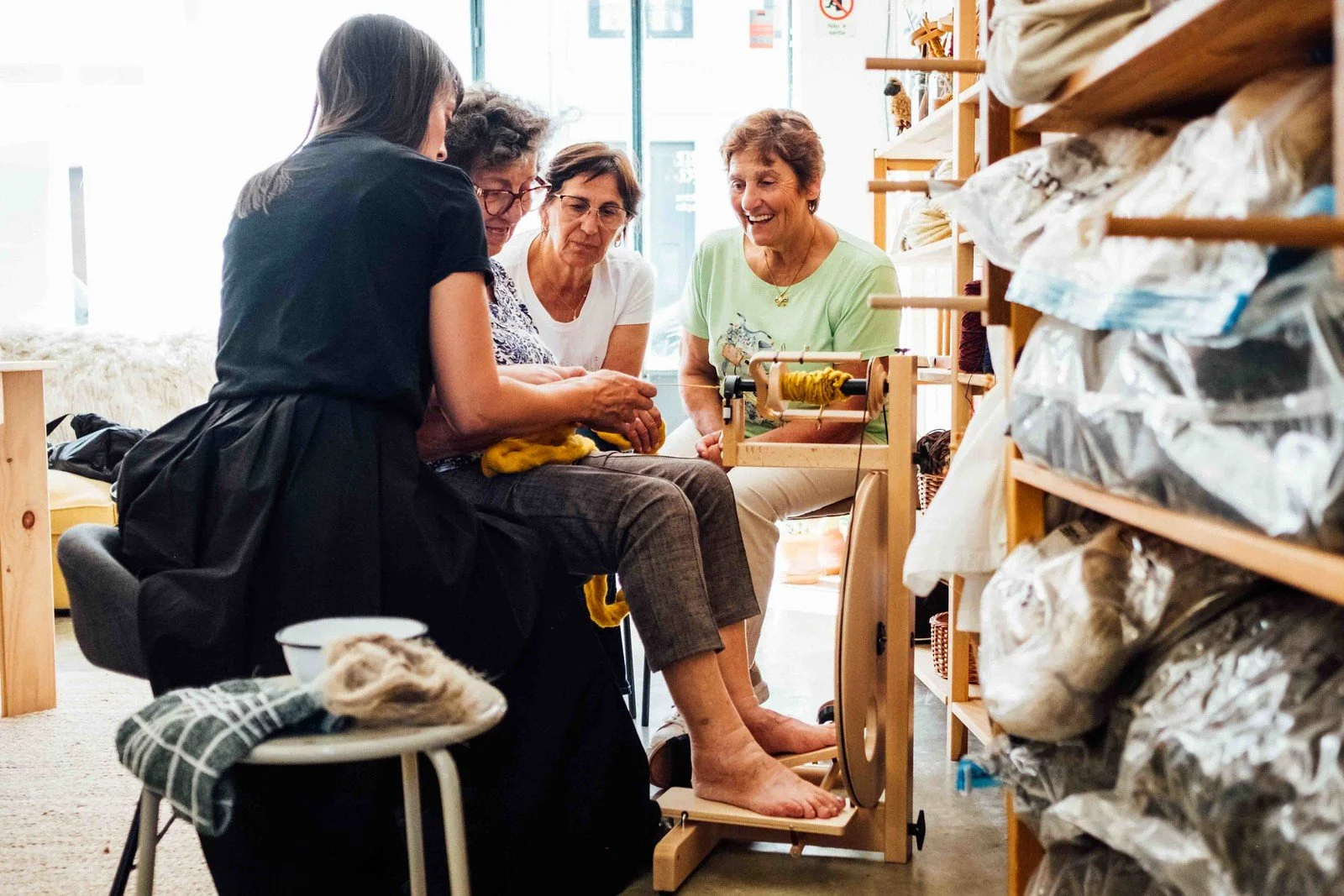
Linen and the group of Senhora do Monte
These lovely ladies are Elvira, Helena and Fátima, and they are part of the Santa Maria do Monte women's group in the municipality of Arouca. Last week, they came to Saber Fazer to learn how to use their new spinning wheel, which will help them spin the linen they produced this year.

Flax, tow and flax waste: an explanation
Anyone who likes flax is surely familiar with the term “tow”, but possibly doesn' t know the real difference between flax and tow, or what flax waste is. Today's post explains the difference between these three types of fibers, all of which come from the same source but are different from each other.

Thinking About Flax, Even When There Will Be No Flax
Even before this madness started, I had already decided that this year I would not grow flax. Spring is intense and this year I wanted more time to finish writing and put out some of the handbooks that I have on stand-by due to lack of time (the one for Flax included). Still, when this time of the year arrives, I can't help looking at the lunar calendar and watching the weather to choose the sowing day.
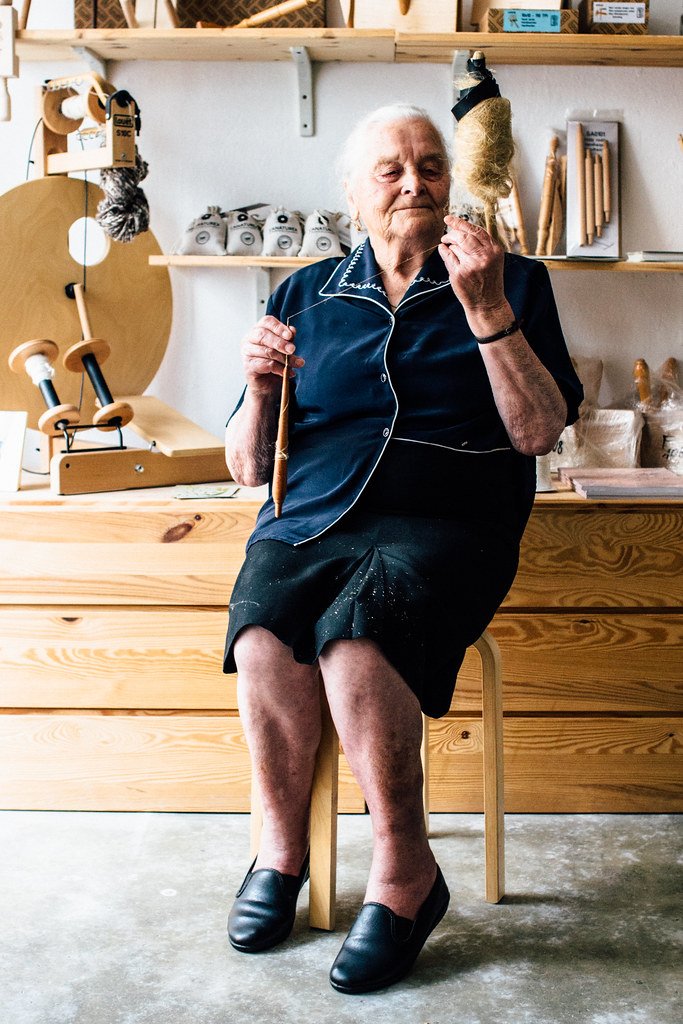
Once a spinner, forever a spinner
A real “If you build it, they will come” moment.
There was a time when I was the one chasing them, now they're the ones coming here.
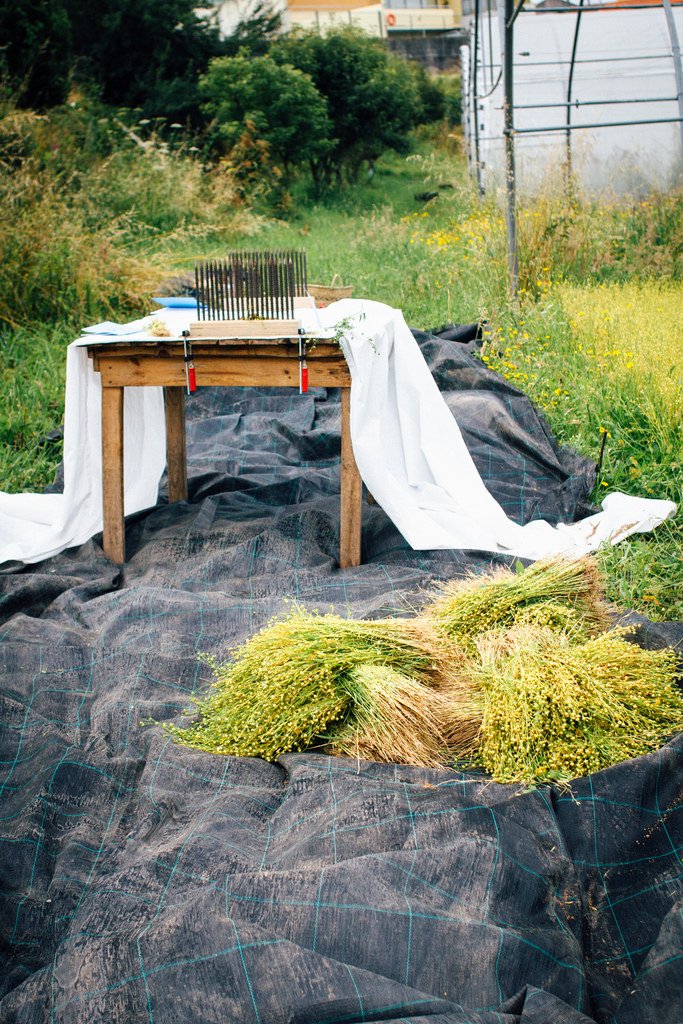
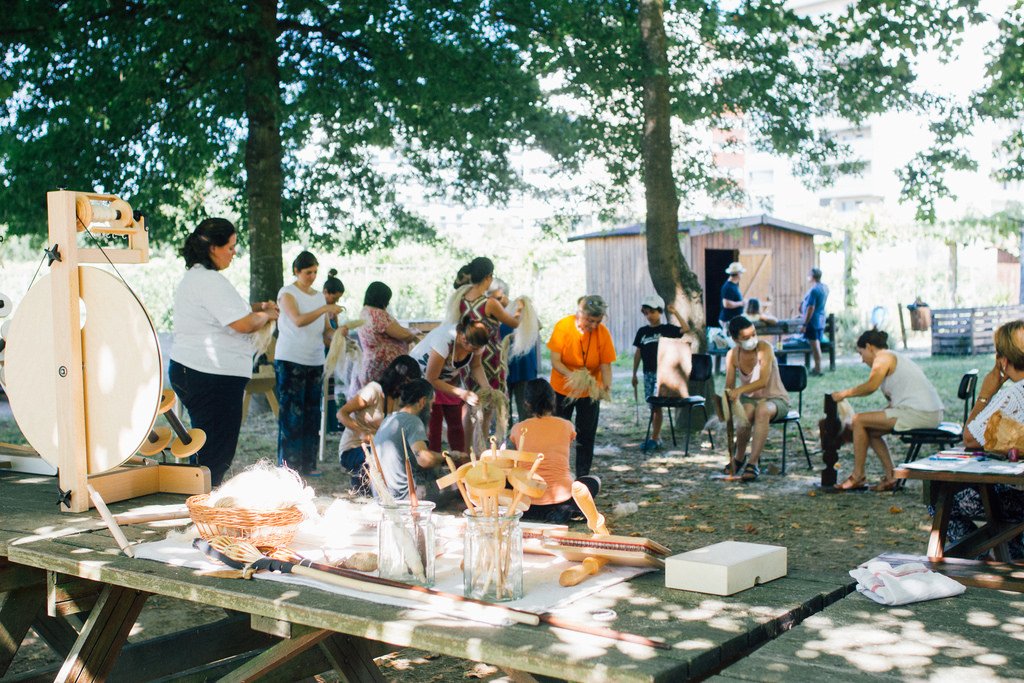
The Flax long course - final day
We sowed, saw it grow, harvested, rippled, retted, dried and ground our own flax in a two and a half months time. This was the easy part of flax growing, the hardest one was yet to come and that is the one that demands us to scutch, comb and spin our flax.
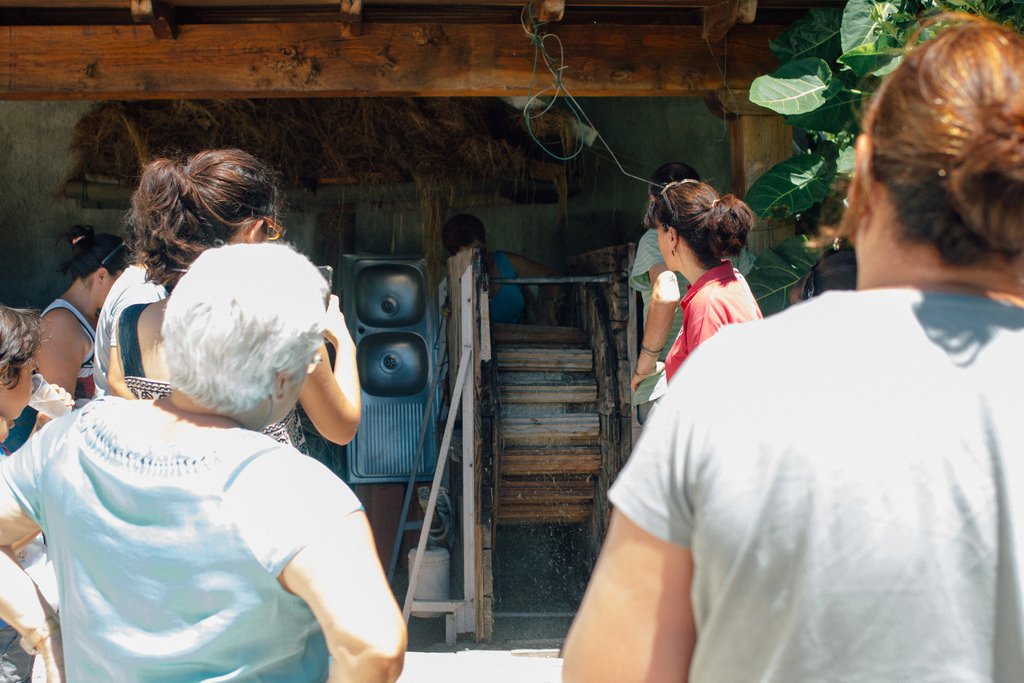
Breaking the flax
After retted and dried, it was time to take the flax we grew at Parque da Devesa to be ground.
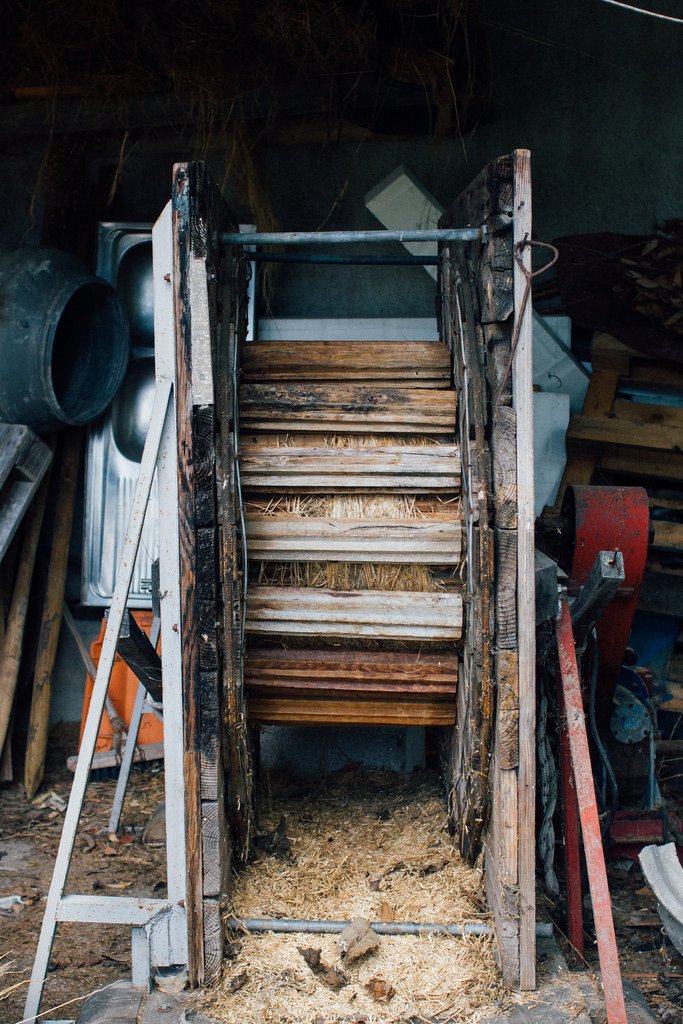
Glorious flax break
This is one of the rare flax grinders still working in our country and one of the only two that work with an engine (the third I know of that is still working is powered by animal traction).

On the retting of flax (pt2)
Although without the same dedication and care that I have for photography, I make a point of making short videos along the way.

On the retting of flax (pt1)
After the harvest, comes the retting, the process by which we separate the flax fibers from the woody part of the stem, or “edge”, as it is more often called by those who traditionally work with flax.
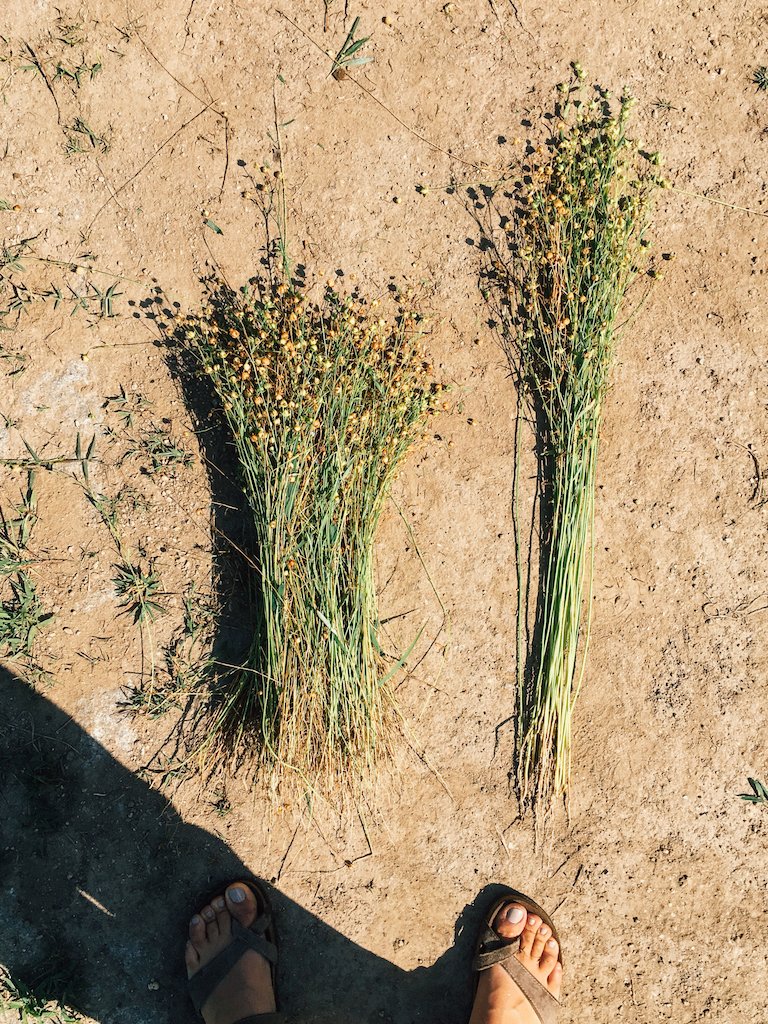
Artificial selection
On Harvest Day, Sara went around our ligneous plantation and selected the tallest plants, which are therefore the most desirable for those who grow flax for fiber, so that we could separate their seed from the rest and, next year, grow a small crop separately from this selection.

From capsule to seed
When we ripple the flax, right on harvest day, and if it isn't done too late, the capsules will still be closed, holding the seed inside.
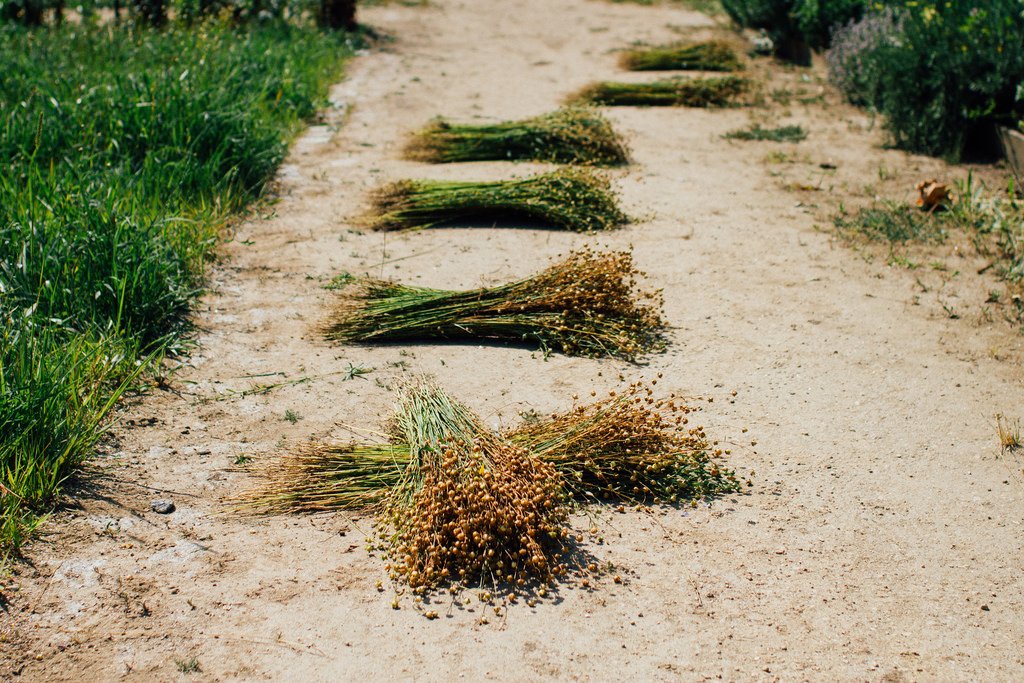
Flax harvest at Parque da Devesa
The last few days have been intense and especially dedicated to flax, which has ripened quickly in the heat and is ready to harvest. The variety we are growing, Galego Flax, has a characteristic that is more common in wild flax and which makes it absolutely essential to harvest at the right time.

Learning to grow flax - the beginning
It was beautiful, last saturday, spending the morning with more than 20 people eager to learn how to grow their own flax and process it into linen. This day was the beginning of our flax production course, that will last until mid July, and that I'm coordenating thanks to the support of Vila Nova de Famalicão city, through the Museum of the Textile Industry and the Parque da Devesa

(re) building a flax scutcher
Those that know me really well know that the work I do isn't about tradition. It's about manufacturing in a more conscious and sustainable in all areas and knowing that that sustainability greatly depends on the ability of reducing production scales and using local resources.

The tools we have
Gathering good tools for next saturday's flax processing workshop was not easy. I wanted to find good ripples and hackles, that had been used in real flax work, not because I'm nostalgic about other times, but because you can't easily find new ones for sale and making them with the same quality would be expensive, because of the specific metal work necessary.
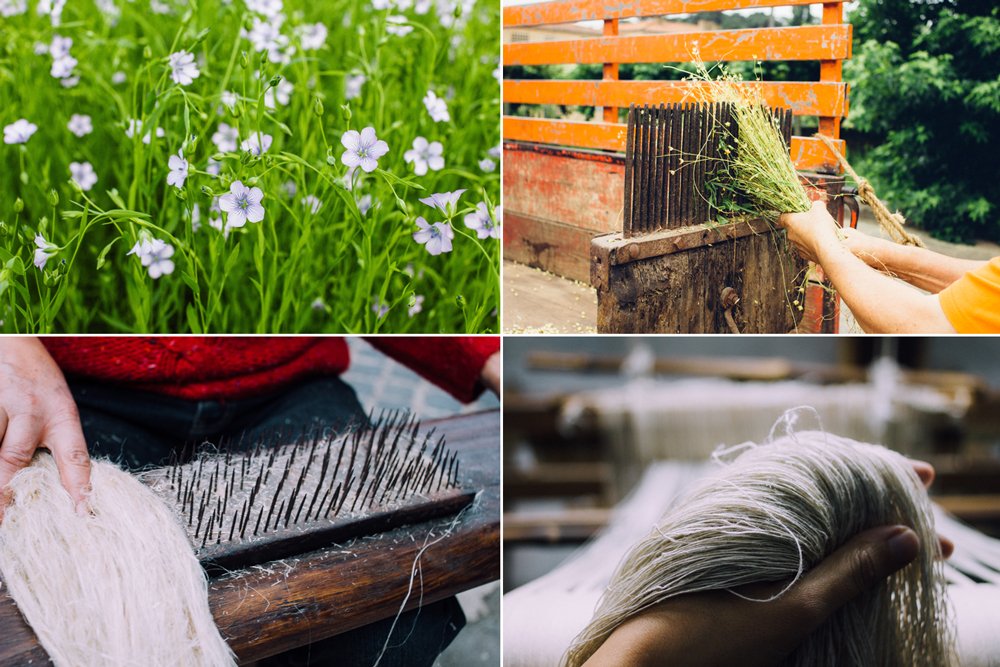
HOW TO PRODUCE FLAX: Practical workshops and demonstrations at Quinta de Serralves
At Quinta de Serralves, this is the second year of cultivating a flax field with the goal of teaching about its production and processing using only locally produced fiber.

Slow and steady
This year the weather was radically different from last year's during the flax season: lots of rain and lower temperatures that have been raising slow and steady.

Growing
As we get ready for next saturday's shearing, our flax keeps growing. If all goes well, that empty area above the linhal will become a small Dyer Plant’s Garden.

Flax sowing 2016
After the trouble we had finding Galego Flax seed to start our crop in Serralves last year, it felt good to have it multiplied and have this year's sowing assured without having to count seeds.

